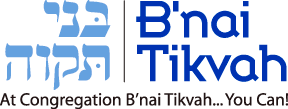With the exception of the Shma, there is probably no prayer as well known as the Kaddish, in particular the Mourner’s Kaddish. It’s easy to understand why. In terms of content, the Kaddish is about as sublime as one could get—from its regal opening (Yitgadal v’yitkadash…”Magnify and sanctify G-d’s great name”) to its longing-filled conclusion (Oseh shalom…”He Who makes peace in His heavens, may He make peace for us and for all Israel”).
But in addition to sublime content, the Mourner’s Kaddish became associated with the idea that by reciting it, we elevate the soul of the deceased. This has profound implications for both the living and the dead.
It is almost always the case that when a loved one dies, survivors have feelings of guilt. In the worst case, these can be irrational and extreme feelings that can be quite as incapacitating as they are unjustified. But without going to extremes, there is more than enough guilt to go around. No matter how faithful we were, we could have been even more devoted. No matter how deep our feelings of love, ambivalence was (and remains) an ever-present reality. No matter how openly we expressed our feelings, there was and is always more that needs to be said, with yet more passion and more sincerity. None of these feelings, however, can be worked out in a direct relationship with our loved ones who have gone on to the next world. It is as if death has slammed a door in our face.
This is the feeling that Kaddish comes to address. And it does so with great passion. It never talks about death at all. Instead, it talks about the one constant that transcends even the power of death, and that is the great Name of G-d. When we say that reciting the Kaddish elevates the soul of the deceased, it’s not the soul just going to another level like in a computer game. It means the soul is one step closer to being fully reconciled with and integrated with the Divine—both the soul of the deceased and, consequently, the soul of the living. Such is the power of the Kaddish prayer.
Originally, only one person was allowed to say the Kaddish, and the halachah is filled with rank orderings of who get “first dibs” at making the recitation (mourners, yahrzeits, etc.). In order to give everyone a chance to recite Kaddish, the Mourner’s Kaddish came to be repeated several times in the service, and each time it was meant to be recited by a different person. Eventually, though, the number of mourners simply overwhelmed the number of Kaddishes that could reasonably be said, so in our day the mourners and those who have yahrzeit stand together for Kaddish.
It is a great mitzvah to say Kaddish, and it is an equally great mission to support someone who wants to say Kaddish by being part of a minyan. Why do you need a minyan to say Kaddish? Precisely because Kaddish (“sanctification,” just like “Kiddush”) is meant to be said in public. In fact, saying “yehai shmey rabbah mevorach…” in the middle of Kaddish is considered so important that no matter where you are in the prayer book, you are to stop and recite, or at least listen to, this verse. “May G-d’s great name be blessed forever and ever, amen.”
Indeed.
